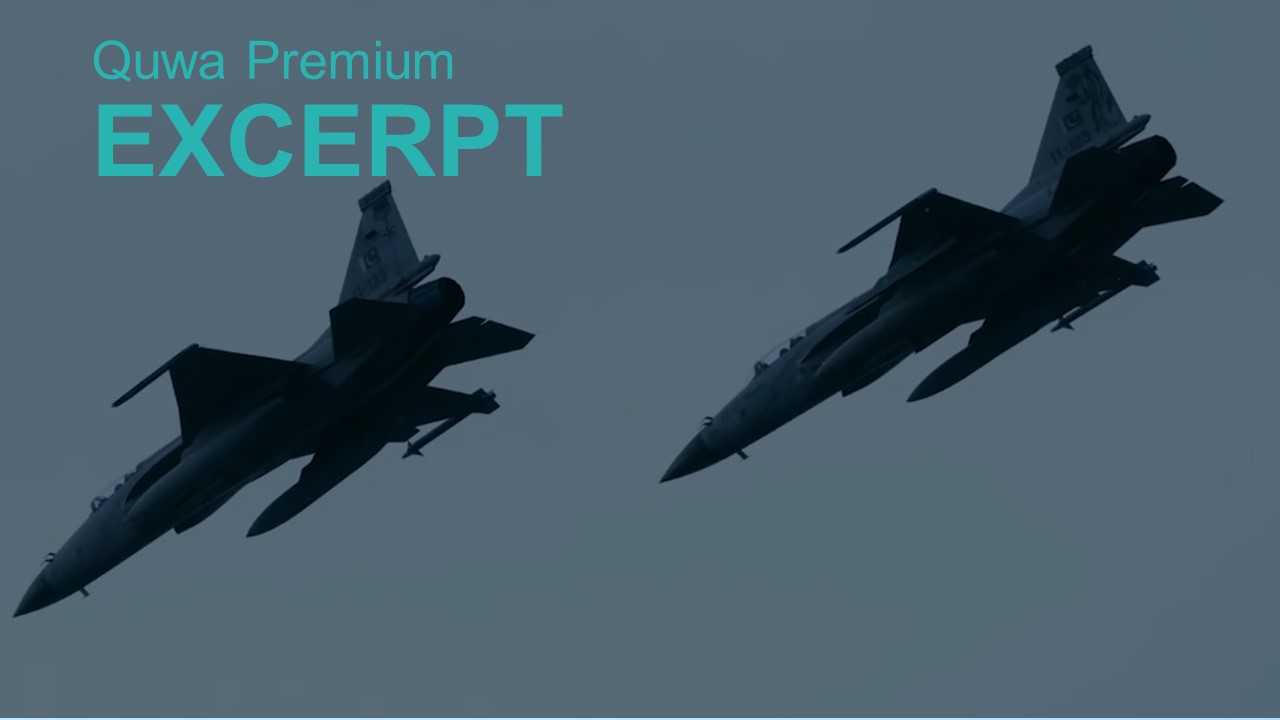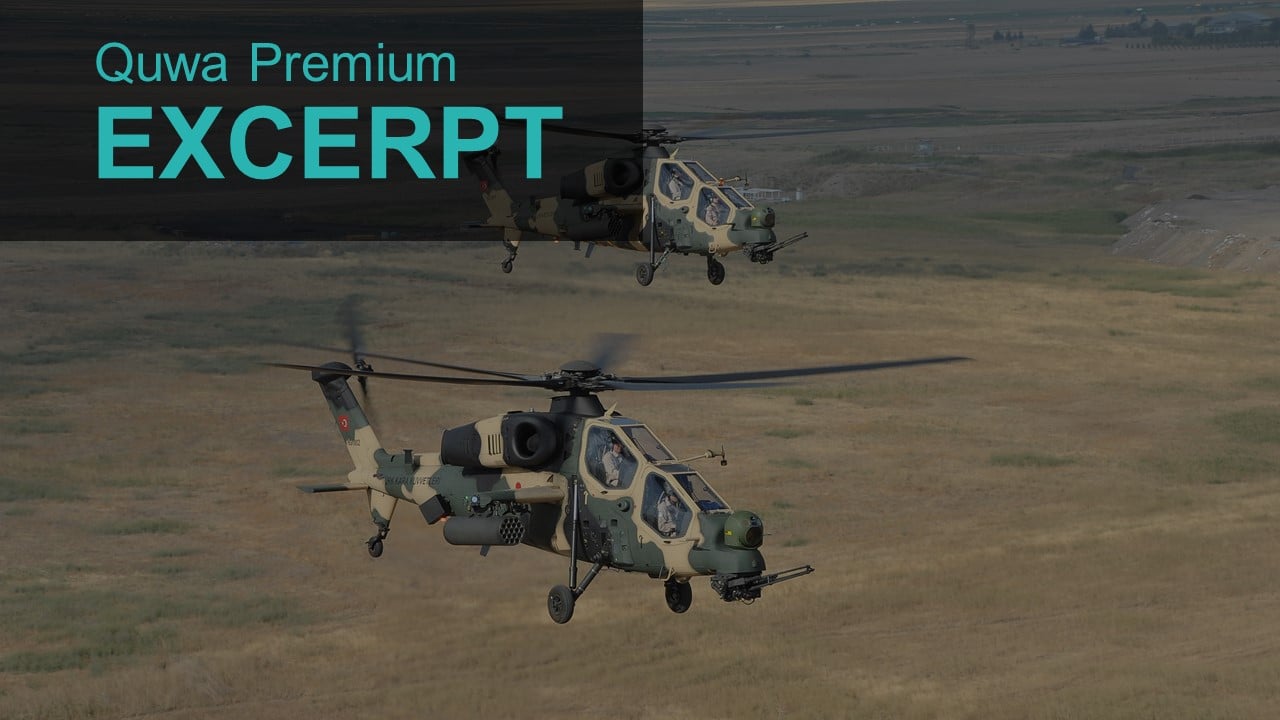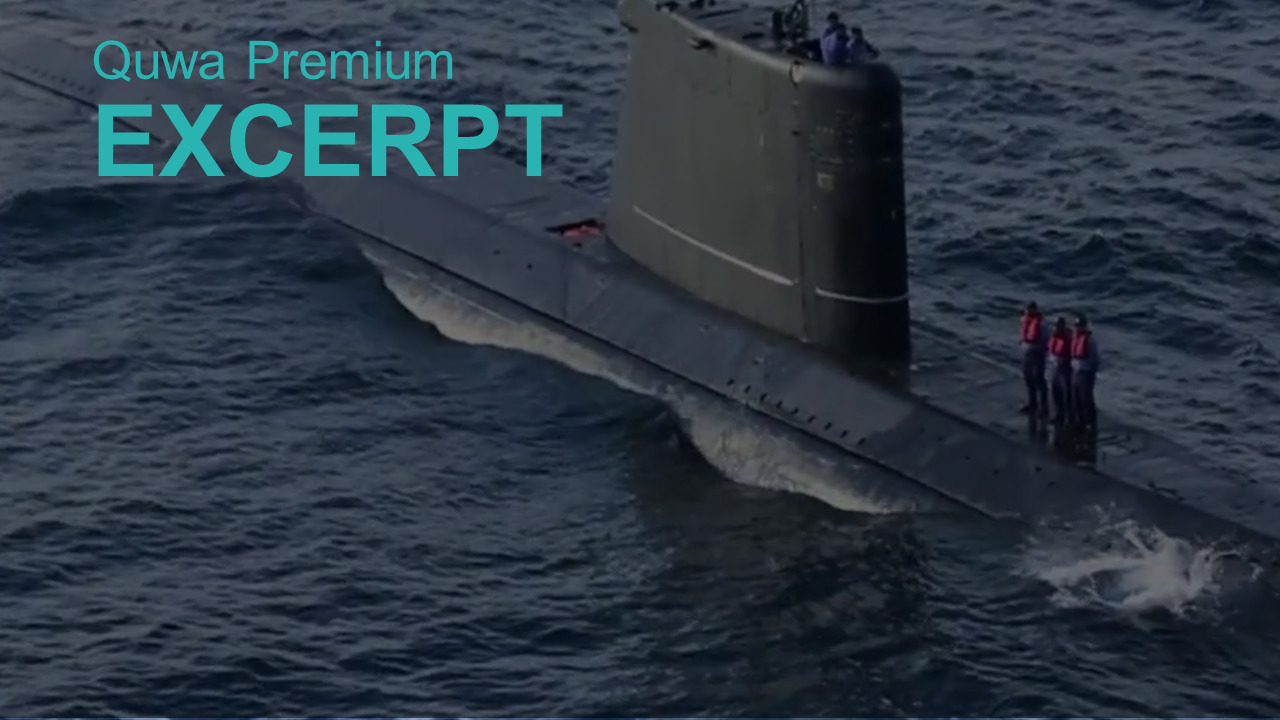1953Views

Pakistan Should Prioritize Investment in the JF-17
To the Pakistan Air Force (PAF), Operation Swift Retort had ‘worked.’ The PAF said it was able to carryout precision strikes against multiple targets across the Line of Control (LoC) while also dissuading a larger and better equipped force from escalating tensions any further. The PAF lauded the effectiveness of its Falcon 20-based electronic warfare (EW) and electronic countermeasures (ECM) aircraft – it specifically noted how the Falcon 20 apparently jammed communications between the Indian Air Force’s (IAF) assets.[1] The PAF also felt that Swift Retort validated its ability to deploy stand-off range weapons (SOW), and manage large-scale air operations. Indeed, for the PAF, Swift Retort was an unprecedented experience in that this operation was its first involving networked assets, long-range guided bombs (SOW) against pre-planned targets and, potentially, as many as 18 to 24 fighters supported by special mission aircraft.
But if Operation Swift Retort ‘worked,’ it did so because it was a large-scale air operation. However small in comparison to what the U.S. Air Force (USAF) could conduct, Swift Retort was arguably the largest and most complex air operation in South Asia’s air warfare history. Its unprecedented nature might have been the biggest reason why the IAF was, from the PAF’s perspective, thrown off sure footing. Notwithstanding the fact that the Government of Pakistan (GoP) sought to de-escalate tensions, the PAF had carved itself an advantageous position. Yes, it was temporary, and if it had occurred in the context of a full-scale war, the upper hand might have only been for a short period of time. But the PAF says it got that advantage.
Thus, rationally speaking, the PAF would want to replicate that advantage again in the future, should the situation in South Asia demand it. However, that is easier said than done considering how the PAF secured that advantage through a large-scale air operation. Thus, in a full-scale conflict, could the PAF muster the resources necessary to repeatedly carry out Swift Retort-like operations? Swift Retort required many key inputs, but in this article, the focus is the most noticeable one: a large number of fighter aircraft.
Simply, Swift Retort worked, in part, thanks to the disproportionate response to the IAF’s Balakot airstrike attempt. It is a break from poetic sensibilities (e.g., ‘the smaller force that won against the larger enemy’), but disproportionality works. To undertake such operations across more areas, and at a higher frequency, the PAF will require a larger fleet of modern combat aircraft. This article will argue that point as well as promote the case to focus on expanding the JF-17 development and acquisition program.
Swift Retort: Numbers Mattered
According to the PAF, its strike package consisted of six aircraft: two Mirage 5PA, each armed with one H-4, a glide-bomb with a rocket-assist/motor capable of a range of 120 km. The H-4 carries a 600 kg warhead, but it uses a manually operated terminal-seeker. Basically, the PAF also sent two Mirage IIIDAs, each with an operator to control the H-4 in its final stage, i.e., before impact against the target. The Mirage 5PAs launched their H-4s, and the H-4s independently flew towards the general location of their targets. Once in the vicinity of their targets, the Mirage IIIDAs took manual control of the H-4s to finish the strike.
In addition, the PAF also sent two JF-17s, each armed with two 454 kg (1,000 lb) MK83-based precision-guided bombs (PGB). The PGB kit is called the ‘Indigenous Range Extension Kit’ (IREK). Pakistan produces the IREK locally, but it is similar to the US Joint Direct Attack Munition (JDAM); it adds a satellite-aided inertial navigation system (GPS/INS) to the GPB as well as stabilizers to help direct the bomb to its target.
Unlike the H-4, the IREK PGB is a ‘fire-and-forget’ weapon. The fighter launches it towards a pre-set target/location, and the PGB will fly towards that target while relying on a GPS feed. It is optimal against large fixed targets, such as bunkers, bridges, hangars, ammunition depots, etc. The IREK provides a range of up to 100 km, but if launched at a high enough altitude. In other words, the lower the altitude of launch, the lesser the range. Thus, with the H-4 and IREK, the PAF deployed a complex strike element.
Finally, in addition to those six attack aircraft, the PAF deployed 12 to 18 F-16s and JF-17s to provide top-cover and ‘sweep’ air-to-air threats, such as the MiG-21bis, Su-30MKI and Mirage 2000H. The PAF used as many as 18 to 24 combat aircraft in Swift Retort, and that too with the support of one Falcon 20 EW/ECM jet and one Saab 2000-based Erieye airborne early warning and control (AEW&C) aircraft.[2]
For a defensively oriented force, this is no small feat in terms of resource use and employment, especially the latter seeing how (1) the PAF never employed such a force in real-world combat before and (2) any major flaw in that operation could have resulted in losses and further escalation, to say the least.
The PAF could be tempted into thinking that a one-off employment is fine, but in reality, it would be better for Pakistan to pattern its future air warfare on Swift Retort. Basically, if Swift Retort generated a tactical advantage against India, then it makes sense to improve it, and be able to deploy it more often. The latter is critical in the context of a full-scale conflict, and there is a legitimate reason to think along those lines.
The risk of escalation is always there, even with a measured retaliatory response. Neither Pakistan or the PAF can control the decisions of other countries. Moreover, showing the ability to sustain such operations at a full-scale wartime level could help with setting conventional deterrence. In other words, India would have to accept that an action on its part could result in quick and severe conventional losses. Pakistan need not retreat to its strategic/nuclear threats and, instead, can press with conventional strikes if it is able to employ it. Thus, India may lose the incentive to engage in Balakot-like pre-emptive operations.
However, in a true wartime scenario, the PAF would need to duplicate Swift Retort across multiple fronts, and potentially, undertake large-scale air operations simultaneously. Consequently, the PAF would sustain losses, and it would need the capacity to again re-employ these operations after India’s response(s).
In just this point above, there are three key things to unpack:
Capacity for Large Scale Operations
First, does the PAF have the capacity to duplicate Swift Retort across multiple fronts? In other words, can it orchestrate a similar air operation from Southern Air Command (SAC), e.g., across Rajasthan or the seas, or over Punjab through Central Air Command (CAC)? The short answer is that the PAF can manage large scale operations from other regions, its resources are well distributed to achieve that goal…[subscribe to Quwa Premium to access the full article]
Simultaneous Operations
The capacity to orchestrate one-offs may be in place, but the PAF may not have the ability to employ more than two or three simultaneous operations. It would be an important capability. If one Swift Retort could throw India off sure-footing, then three such operations at the same time in different areas could carve additional tactical and/or strategic openings. However, multiple and concurrent deployments could be an infeasible use of resources for the PAF…[subscribe to Quwa Premium to access the full article]
Sustain Losses
In wartime, the only way to replace lost aircraft is by tapping into stored reserves. It is not known how the PAF calculates its reserve needs. However, a number of sources had labelled the PAF’s Peace Gate III order of 11 F-16A/B Block-15OCUs (Operational Capability Upgrade) as attrition reserves. With the Peace Gate IV order of 60 aircraft, the PAF would have had 110 F-16s on paper by 1997 (if it had not been sanctioned under the Pressler Amendment), of which 10 aircraft would have been in reserve…[subscribe to Quwa Premium to access the full article]
The Benefits of Concentrating on Only the JF-17
The JF-17, however, is a different story. Since the supply channel involves China and Pakistan Aeronautical Complex (PAC), the PAF can readily replace lost aircraft with new-built ones. Granted, there is always the risk of losing PAC’s production line (e.g., as a loss in war), but the potential of a parallel line in China is also in place…[subscribe to Quwa Premium to access the full article]
The JF-17 Will Become Pakistan’s Most Capable Air-to-Air Asset
On the JF-17 Block-III, the KLJ-7A will accompany a new beyond-visual-range air-to-air missile (BVRAAM). PAC confirmed this to Quwa at the 2018 International Defence Exhibition and Seminar (IDEAS). However, while there are rumours claiming the PAF will get an export variant of the PL-15, PAC did not comment on the specific make, model or capabilities of the new BVRAAM…[subscribe to Quwa Premium to access the full article]
The JF-17’s Strike Potential is Only Limited by the PAF
Interestingly, the JF-17 already has an effective strike capability. The Block-II can carry 227 kg (500 lb) MK-82 and 454 kg (1,000 lb) MK-83 GPBs, either unguided or as PGBs with a range of up to 100 km, depending on the launch altitude. The Block-I and Block-II can also carry C-802 anti-ship cruising missiles (ASCM), i.e., a stand-off range capability deployable against moving targets. However, these are not fully analogous to the precision-strike capability offered by the PAF’s venerable Mirage III/5s…[subscribe to Quwa Premium to access the full article]
Could the PAF Still Acquire an Off-the-Shelf Fighter?
The PAF Chief of Air Staff (CAS) had hinted that an off-the-shelf fighter can come. In fact, Air Chief Marshal (ACM) Mujahid Anwar Khan stated, “we have to be aware of modern technologies, and if the acquisition of a new fighter fits into our doctrine then we will try to acquire it. The balance has to be maintained.”[3]
Traditionally, the main benefit of importing a new fighter is that it would introduce new technology. This was the case from the F-104 to the Mirage III/5 to the F-16 and F-16 Block-52+…
End of Excerpt (1,600/4,108 words)
You can read the complete article by logging in (click here) or subscribing to Quwa Premium (click here).
[1] Alan Warnes. “Operation Swift Retort: One Year On.” Air Forces Monthly. April 2020. Page 35
[2] Alan Warnes. “Operation Swift Retort: One Year On.” Air Forces Monthly. April 2020. Page 33. URL: https://airforcesmonthly.keypublishing.com/the-magazine/view-issue/?issueID=8176
[3] Ibid. p32.


